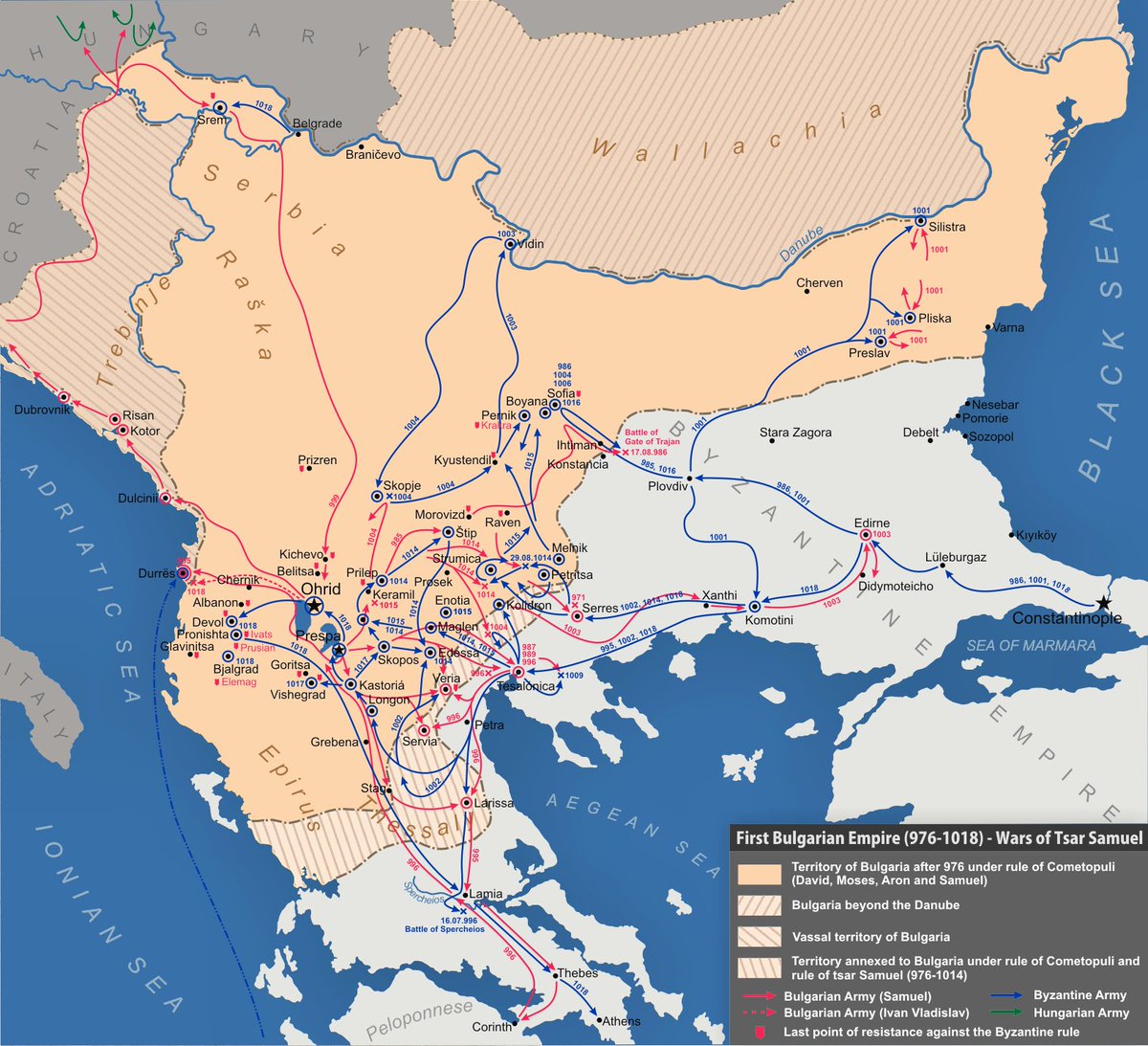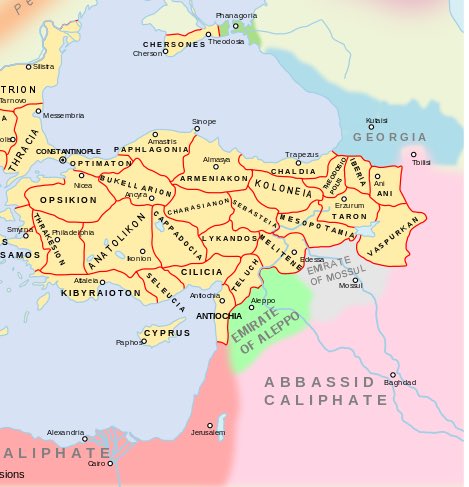
In 1001 Basil marched his army from Constantinople to Preslav and Pliska, quickly taking the much weakened cities. Basil then took the city of Silistra on the Danube, beating back Bulgar counterattacks. With the north secure, Basil marched to Komotini in Thrace to winter. 

In 1002, Basil continued the campaign by attacking key forts around Thessaloniki and recaptured Larissa. Once the area was secured, Basil moved back north to the Danube and besieged the castle of Vidin.
Vidin was Samuel’s base before he became Tsar and was a key fortress for controlling the Danube river valley. The castle withstood an eight month siege, but fell when the bishop betrayed the defenders to the Byzantines. 

By the end of 1003, Basil controlled all of Danubian Bulgaria and had secured key forts in northern Greece, isolating the Bulgars to their strongholds in the mountains. Samuel’s recognized that the situation had become dire and sprung into action. 

In an effort to derail Basil’s methodical dismemberment of his kingdom, Samuel led a daring raid on Adrianople. The city was celebrating a festival and the Bulgars were able to take the garrison by surprise, sacking the wealthy city. Samuel quickly left with plunder in tow.
Basil was too far north to react in time, but began to move south from Vidin and into the mountains, destroying Bulgar castles on the way. Basil found Samuel’s army near the town of Skopje, camped on the west bank of the Axios River in spring of 1004. 

The river was flooded and Samuel did not believe Basil would be able to cross. Samuel let his guard down. This mistake spelled disaster for his army.
Basil’s soldiers found a fors and crossed the river, launching a surprise attack on the Bulgar camp. Samuel escaped but the spoils from Adrianople and the whole camp, including the royal tent, fell into Basil’s hands. 

Basil took advantage of the situation and besieged Skopje. The town was quickly surrender by its governor, Romanos. Basil welcomed the son of the old Tsar Peter and made him a patrician and the governor of Abydos.
Even more devastating for Samuel was the loss of Dyrrhachium, the strategic port city on the Adriatic. 

The city was under control of Ashot Taronites, Samuel’s Byzantine son-in-law and captive. Ashot fled to Constantinople with Samuel’s daughter and surrendered the city to the Byzantines. A naval squadron was sent to the city and its was taken without a fight. 

After Skopje, the war developed into a stalemate in the mountains. Basil attempted to take the formidable Bulgar strongholds while Samuel looked for a chance to breakout from his encirclement. In 1009, he found an opening.
Samuel pushed out from the mountains and began raiding around Thessaloniki, Basil’s army caught them east of the city and soundly defeated them. Samuel retreated and the conflict returned to a frustrating stalemate. 

Basil; however, did not only have Bulgaria to worry about. Trouble was brewing in Italy and soon war would return to that region.
The literary sources we have do not give any specific accounts to the Varangians during this campaign, but we can assume they were the core of Basil’s army during this time.
The cavalry-centric Tagmata were not well-suited for mountain ambushes and assaulting fortresses, two things the Varangians excelled at, as attested by Basil’s uninterrupted success with their 6,000 strong contingent at the core of his army. 

The Varangian Guard’s indispensability will convince Basil to dispatch a contingent with Catepan (Byzantine governor of southern Italy) Basil Mesardonites in 1010 to crush the ever-restless Lombards. 

• • •
Missing some Tweet in this thread? You can try to
force a refresh













